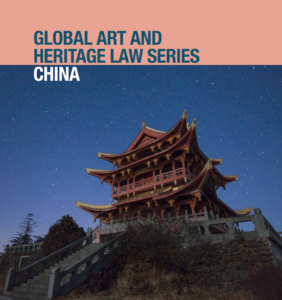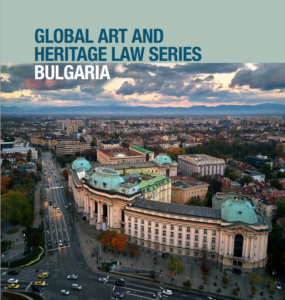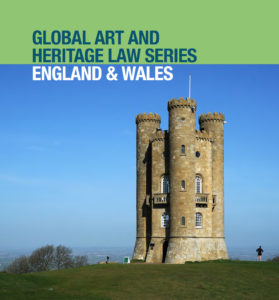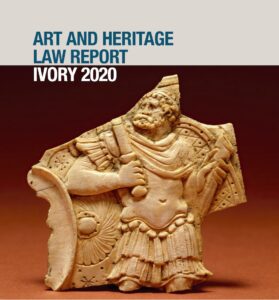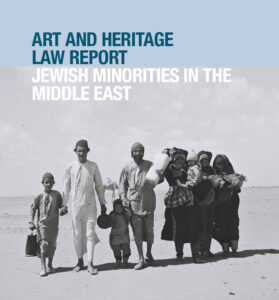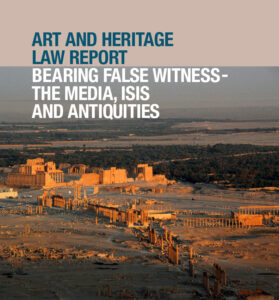CCP Publications
Global Art and Heritage Law Series & Art and Heritage Law Reports
The Committee for Cultural Policy announces publication of nine volumes in a new Global Art and Heritage Law Series, providing locally sourced data and information on law and cultural heritage free to a global audience. The initial nine-volume publication was created in collaboration with TrustLaw, the Thomson Reuters Foundation’s global, pro bono legal programme. The entire Global Art and Heritage Law Series is accessible for free to the public. Click on any report to read or download a copy in .pdf format.
Each report in the series was authored by volunteer attorneys who offered their time and knowledge to advance the project. The Thomson Reuters Foundation and TrustLaw provided coordination between the legal teams; Kate Fitz Gibbon was series editor.
We would like to thank our many individual contributors and partner law firms:
Bulgaria: Written by Christian Stefanov of White and Case LLP and revised by Katya Hartl of White & Case LLP
China: Yuanyou Yang
England and Wales: Olivia Franklin, Brett Masters, Alina Sartogo, and Rebecca Shorter of White & Case LLP
India: Anonymous contributors and Kate Fitz Gibbon
Italy and the EU: Cecilia Carrara, Marialuisa Garavelli, and Sara Colombera
Nigeria: Omolola Coker; Adeleke Alao, Ibiwunmi Adeyeri, Oluwakemi Agbaje, and Olayemi Lawal
Peru: Federico de Cárdenas Romero, Christian Wong Vargas, Danna Hamideh Elhatel, Fabiana Alvarado Silva, Juan Diego Carrillo, and Samantha Cusicanqui Guille
Turkey: Hazel Levent, Ece Akıncıbay, Ayris Açıkalın, and Zeynep Ülkü Kahveci
United States: Kate Fitz Gibbon and Katherine Brennan
Contributing Law Firms
Adepetun Caxton-Martins Agbor & Segun (Barristers + Solicitors), Nigeria
Estudio Echecopar, a Member Firm of Baker & McKenzie International, Peru
Fitz Gibbon Law LLC, USA
Legance Avvocati Associati, Italy
White & Case LLP, an international law firm
Additional thanks to an anonymous New Delhi, India firm.
Special thanks to Hazel Levent and Olivia Franklin of White & Case LLP, whose tireless commitment and organizational skills made the project possible and to our dedicated colleagues at Thomson Reuters Foundation Trust Law.
Art And Heritage Law Reports
Ivory 2020, published as an Art and Heritage Law Report, 39 pages, by Olivia Franklin.
Poaching of African elephants for raw ivory, amounting to nearly 100 each day, has prompted legislatures in the US, UK, and EU to tighten restrictions on the sale of elephant ivory in recent years. Despite arguments by the art trade that antique and ancient works of art should be exempted, and the trade in modern and raw ivory prohibited in order to protect elephant populations, many laws now ban trade in ivory altogether. The report summarizes and analyzes current and pending US, UK and EU Laws and regulations on trade in elephant ivory from Africa and Asia. The report provides an overview on the international framework and the restrictions on commercial use of ivory, from ancient to antique and modern, in order to provide guidance on what can and cannot be imported, exported, sold, donated or inherited.
Jewish Minorities in the Middle East, published as an Art and Heritage Law Report, 55 pages, by Katherine Brennan and Kate Fitz Gibbon.
The pervasive pattern of abuse of both human and property rights of religious and ethnic minorities in the Middle East raises serious questions about the protection of minority interests within the nationalist framework of cultural policy today. This report examines the inability – or unwillingness – of state actors to protect cultural interests of religious and ethnic minorities. The devastation in the Middle East not only highlights the failure of the 1970 UNESCO Convention to ensure the protection of global cultural heritage after almost 50 years, despite its adoption by hundreds of nation states. It also makes a compelling argument for embracing broader concepts of global stewardship and international protection of heritage as a more workable approach to halting destruction in war and civil crisis, and to preserving mankind’s achievements for the future.
Bearing False Witness: The Media, ISIS and Antiquities, 2017, published as an Art and Heritage Law Report, 16 pages, by Katherine Brennan and Kate Fitz Gibbon.
The reflexive repetition of a false narrative about a multi-billion dollar illegal global antiquities market is an example of the media’s failure to investigate and corroborate its sources. Speculation, rather than factual analysis, has set policy direction for US, UK, and European governments ever since the first images appeared of ISIS destroying heritage sites as part of its larger reign of terror. This report shows how widespread, inaccurate information has distracted policy-makers from the substantive issues of terrorist-financing, and has given extremist advocates of nationalist interests a weapon to undermine the legitimacy of the global trade in art. It threatens the existence of a legitimate antiquities trade and encourages a narrow, highly-politicized view of culture that limits the ability of museums around the world to preserve art, study it, and show our shared human history to the public.
In addition to the Global Art and Heritage Law Series, the Committee for Cultural Policy publishes the online journal, Cultural Property News.
Cultural Property News brings current news, interviews and in-depth analysis on art and cultural heritage issues free to the public. Our readers include thousands of museum and arts professionals, teachers and students, gallerists and art collectors, legal practitioners, legislators and the media.
The Committee for Cultural Policy, Inc. a U.S. 510(c)(3) organization, gratefully accepts donations from the public and grantmaking organizations. Your contribution will support the publication of additional volumes now in the works and help Cultural Policy News to cover public policy, museums, archaeology and the circulation of art. Please contact us at info@culturalpropertynews.org!
The Global Art and Heritage Law Series is provided for general information purposes only. It has been prepared as a work of legal research only and does not represent legal advice in respect of the laws of the relevant countries described herein. It does not purport to be complete or to apply to any particular factual or legal circumstances. It does not constitute and must not be relied or acted upon as legal advice or create an attorney-client relationship with any person or entity. Legal advice should be obtained from legal counsel qualified in the relevant jurisdiction(s) when dealing with specific circumstances. Neither the Thomson Reuters Foundation, TrustLaw, the Committee for Cultural Policy nor any contributor to this Report is holding itself, himself or herself out as being qualified to provide legal advice in respect of any jurisdiction as a result of participation in or contribution to the Global Art and Heritage Law Series.
Legal and Licensing Information
The Global Art and Heritage Law Series is published under a Creative Commons Attribution-NonCommercial-NoDerivatives 4.0 International Public License. You may download, copy, and share the individual publications in the series, but neither modification nor commercial uses are allowed. Copyrighted materials including illustrations within the publications are subject to other licensing requirements. Questions should be directed to info@committeeforculturalpolicy.org.
Top of page photo: Celestial Figures, Wall Painting Gypsum plaster with pigment, Cave 224, Kizil Cave Complex, ancient kingdom of Kucha, Baicheng county, Xinjiang province, China. National Museum of Asian Art, Smithsonian Institution, Washington DC. Image has been cropped.
